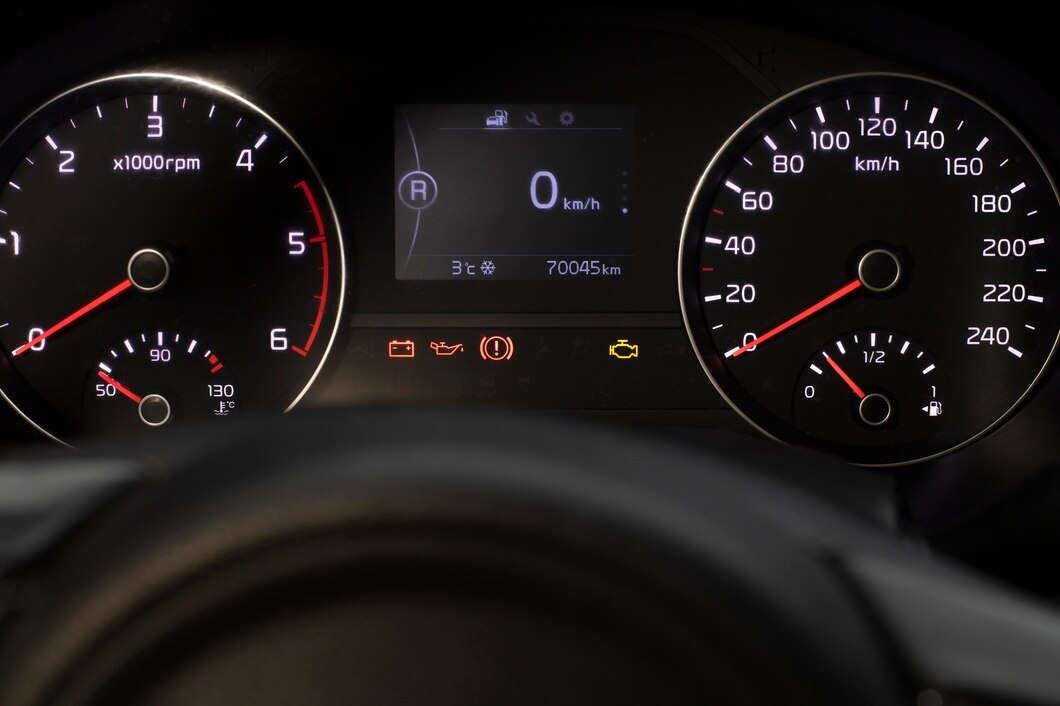The camshaft position sensor is a critical component of your car’s engine management system. It monitors the position and speed of the camshaft, providing vital information to the engine control unit (ECU) to determine ignition timing and fuel injection. When the camshaft position sensor begins to fail, it can lead to various performance issues and potentially cause engine problems. Recognizing the early signs of a faulty camshaft position sensor can help you address the issue before it escalates. Here are some key indicators to watch for:
1. Check Engine Light
One of the most common signs of a failing camshaft position sensor is the illumination of the check engine light on your dashboard. The sensor’s malfunction can trigger diagnostic trouble codes (DTCs) stored in the ECU, indicating problems with the camshaft position sensor or related components. If the check engine light stays on or flashes intermittently, it’s essential to have the vehicle diagnosed by a mechanic.
2. Difficulty Starting the Engine
A faulty camshaft position sensor can cause difficulty starting the engine, especially when the engine is warm. If you notice that your car struggles to start or requires multiple attempts before it cranks over, it could indicate a problem with the sensor’s signal. This issue can be particularly noticeable after the engine has been running and then sits for a short period.
3. Engine Stalling or Rough Idle
Irregular engine idling or stalling can be symptoms of a failing camshaft position sensor. The sensor provides crucial data to the ECU for proper fuel injection and ignition timing. When the sensor malfunctions or provides inaccurate readings, it can disrupt the engine’s combustion process, leading to rough idling, hesitation, or even sudden stalling while driving.
4. Loss of Engine Power
A faulty camshaft position sensor can result in a loss of engine power and performance. If the sensor fails to accurately detect the camshaft’s position and speed, the ECU may not adjust the ignition timing and fuel injection properly. This can lead to decreased engine power, sluggish acceleration, and reduced overall performance.
5. Poor Fuel Economy
Reduced fuel efficiency is another potential symptom of a failing camshaft position sensor. When the sensor provides incorrect data to the ECU, it can cause the engine to run inefficiently, leading to increased fuel consumption. If you notice a significant drop in fuel economy without any other apparent issues, it’s worth checking the camshaft position sensor.
6. Backfiring or Misfiring
Backfiring or misfiring in the engine can occur when the camshaft position sensor fails to deliver accurate timing information to the ECU. This can result in improper fuel injection or ignition timing, leading to combustion issues. If you hear popping noises from the engine or feel it jerking during acceleration, it could indicate a problem with the sensor.
7. Engine Hesitation During Acceleration
A faulty camshaft position sensor can cause hesitation or stumbling during acceleration. When the sensor provides incorrect data to the ECU, it may not adjust the engine’s timing and fuel delivery appropriately for rapid acceleration. This can result in a noticeable delay or hesitation when you press the gas pedal, affecting the vehicle’s responsiveness.
Preventive Measures and Maintenance
To prevent issues with the camshaft position sensor and ensure optimal engine performance, follow these preventive measures:
- Regular Maintenance: Keep up with your vehicle’s recommended maintenance schedule, including periodic inspections and sensor checks.
- Use High-Quality Parts: When replacing the camshaft position sensor, opt for high-quality OEM (Original Equipment Manufacturer) or aftermarket parts to ensure reliability and longevity.
- Address Warning Signs Promptly: If you notice any of the early signs mentioned above, such as the check engine light, difficulty starting, or engine performance issues, have the vehicle inspected by a qualified mechanic promptly.
- Keep Engine Components Clean: Dirt, oil leaks, and debris can affect sensor performance. Keep engine components clean and inspect for any leaks that may affect the sensor’s operation.
In conclusion, recognizing the early signs of a faulty camshaft position sensor is essential for maintaining your car’s performance and reliability. If you experience any of these symptoms, don’t ignore them. Have the vehicle inspected by a professional mechanic to diagnose the problem and replace the sensor if necessary. Prompt attention to sensor issues can prevent more severe engine problems and ensure a smooth driving experience.











